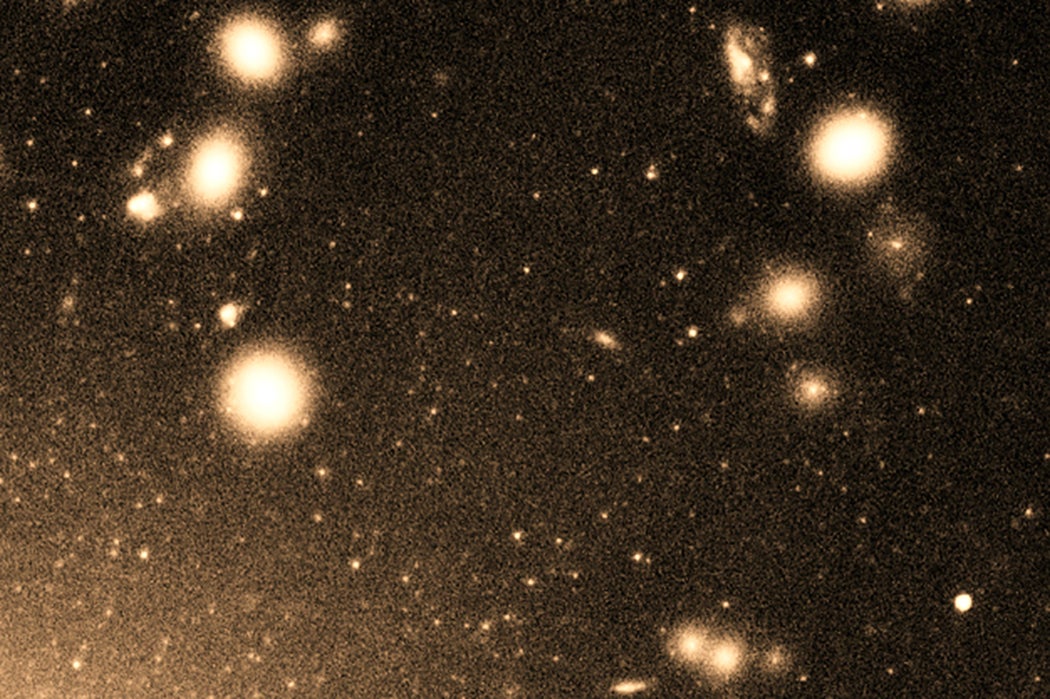As incredible as it sounds, everything science has observed—galaxies, stars, planets, all kinds of matter—accounts for less than 5 percent of the universe, according to the physicist David B. Cline. So what’s the rest? We call it dark matter and dark energy. Dark matter and dark energy don’t reflect or absorb light, and therefore haven’t been directly observed.
Audio brought to you by curio.io
Scientists have known about dark matter for almost ninety years. We obviously can’t see it, but we can infer its existence because it exerts gravitational influence on things we can observe, such as a celestial object’s motion. It also bends light through gravitational lensing, as described by S.M. Chitre and colleagues in Current Science. One prediction of general relativity is that mass can bend light waves. As light waves from distant objects travel to our telescopes, the light passes by other massive objects such as stars and galaxies. Those objects have enough mass to bend the light we see, distorting the image. Sometimes light is bent more than the mass of a known object would be able to accomplish on its own, so scientists infer that the light is being bent by something we can’t see: dark matter.
Some inferences about dark matter can be made from these observations. For example, the more the image is distorted, the more dark matter is present. Wherever regular (baryonic) matter is found, dark matter is typically found as well. Galaxy clusters, for example, seem to contain a lot of dark matter which helps hold the clusters together gravitationally. It has been calculated that roughly 25% of the universe is dark matter. (No one is really sure about these numbers; another estimate from the physicist Daniel Whiteson has the observable universe at 5%, dark matter at 27%, and dark energy at 68%.)
Dark energy is even weirder. Scientists are pretty confident that the universe began in a sudden explosion, the Big Bang, and the entire universe is still expanding outward from it. Given that no new propulsive event has occurred since then, its effects should be wearing off, and the rate of universal expansion should be slowing down. But it’s actually speeding up. Something is providing energy for acceleration, and given how much universe there is to accelerate, that’s a lot of energy. According to current theories, dark energy makes up about 70% of the known universe.
According to physicist Paul Steinhardt, there are three possibilities for what dark energy actually is: 1) It is some unknown property of space (Einstein’s cosmological constant); 2) It is some previously unknown type of energy that actually takes up space, called Quintessence; or 3) Some portion of our understanding of physics is fundamentally wrong. Perhaps dark energy and dark matter consist of some type of particles we haven’t yet been able to observe.







